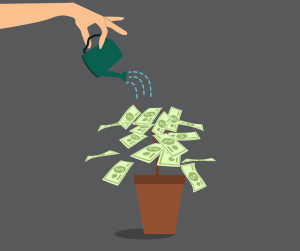The number of donors to charity continued its long decline during 2023. Micro donors, those who gave $100 or less, and small donors ($101 to $500) made up 83.2% of all donors. Those categories had declines of 5.6% and 3%, respectively.
Those waiting for big donors to fill the gap were disappointed. While the number of donors fell across all funding levels, supersize donors (at least $50,000) had the largest decrease in number, falling by 7.4% year over year.
Those are among the numbers from the Fundraising Effectiveness Project (FEP) report which was released Sunday during the Association of Fundraising Professionals’ annual AFP ICON international conference in Toronto. The FEP is administered jointly by the Association of Fundraising Professionals and GivingTuesday.
The data should not come as a surprise, given the findings from GivingTuesday last month in its GivingPulse report. There is a difference in the reports’ methodologies. While both GivingPulse and FEP provide insights into the charitable sector in the United States, they examine different types of data. As a survey tracking self-reported attitudes and behaviors about giving, GivingPulse reflects what people believe about their own generosity, and it includes many different types of generosity, such as cash, time, advocating for causes or groups and contributing formally or informally.
By contrast, FEP tracks only transactional data handled by providers offering services to charities. These differences mean that for GivingPulse, increased visibility of opportunities to give during the fourth quarter of 2023 likely led to a rise in self-reported giving (of all types, such as giving items or giving cash directly to a charity or volunteering), while FEP’s downward trends only reflect a decline in one form of generous behavior, donating cash to a charity through a donation platform.
The observed decrease in donors contributing less than $500 was responsible for 79.3% of the overall decrease in donors, according to Woodrow Rosenbaum, chief data officer of GivingTuesday. The donor count dropped by 4.9% during the fourth quarter, when not accounting for late data. After adjusting for delays in data reporting, it is estimated the actual figure was a decline of 3.4%, said Rosenbaum.
“The decline indicates a continued downward trend of donors since the peak in 2020,” he said. It is worth noting that 2020 was the pandemic year, in which travel and entertainment options were severely curtailed and thus fewer options for discretionary income.
New donors represent 18% of total dollars in the data. The spike upward in acquisition was most probably from emergencies, disasters and a series of conflicts. “Those donors don’t retain generally,” said Rosenbaum. The data “acutely shows the growing challenge for American nonprofits: a near-universal decline in fundraising metrics, including dollars raised, donor counts, and retention when compared to 2022,” according to authors of the FEP report.
“Strengthening the social sector in 2024 will require nonprofits of all sizes to focus on frequent engagement with supporters and with the communities their donors are part of,” said Rosenbaum. “Americans want to give, in both formal and informal ways, and nonprofits need to reinforce the value of giving and the impact of their work while unlocking new ways for supporters to engage with their causes.”
It is increasingly important for organizations to foster a culture of philanthropy that withstands economic fluctuations, said Mike Geiger, president and CEO of AFP and the AFP Foundation for Philanthropy. “We need to reimagine traditional approaches to donor acquisition and retention, embrace emerging technologies to broaden outreach and engagement, and renew our focus on donor stewardship. In this era of unprecedented volatility, the ability to adapt and innovate will not only be the hallmark of successful fundraising efforts but also the cornerstone of sustained mission-driven impact,” he said.
Lauren Sheehan, president of DonorPerfect said the data “shows how challenging fundraising can be, but today there are so many new opportunities for nonprofits to engage their community and create momentum for growth. … By taking a human-first approach to connecting with their supporters, including personalized outreach and developing data-informed strategies and plans, organizations can build stronger relationships with their community at every level. With the right mindset and technology, the sector can weather this difficult season and emerge even stronger.”
FEP reports are made possible by the generous support of collaborating data providers, including Bloomerang, Classy, Community Brands, DonorPerfect, Keela, NeonOne and Qgiv. FEP’s partner network also includes data analysis and additional support from Bonterra.
The full Q4 2023 report is available here.











